Activists vow to fight the Cerro Blanco mine, which threatens a water supply for millions in Guatemala and El Salvador.
By Michael Fox
May 28, 2024
Source: Truthout

A boy and a girl step out of the Lempa River in El Salvador. The Lempa is the country’s largest river. MICHAEL FOX
Asunción Mita is a town of roughly 40,000 people in the hills of southeastern Guatemala, near the border with El Salvador. It’s dusty and hot in the dry season — located in the Central American dry corridor, which is particularly vulnerable to climate disasters. And it has become the center of a battle over the future of mining in Guatemala.
In January, the outgoing Guatemalan government gave the green light for the Cerro Blanco open-pit gold mine in the hills outside of Asunción Mita. The mine is run by Canadian corporation Bluestone Resources, which expects to produce over 300,000 ounces of gold per year. Bluestone says it will bring jobs and opportunities to the local community.
But most locals don’t buy it.
Yony Barrera is one of them. He’s the host of the local radio show “Good Night Mita” and a member of the Permanent Environmental Committee of Asunción Mita, which was launched in March 2023 to fight against the mine.
Barrera doesn’t fit with your image of a typical environmentalist. He’s a middle-aged dad who runs a hardware store and rides a motorcycle. But he is passionate about protecting his community.
“Yeah, they say they’ll bring development and jobs,” says Barrera. “And we’re a poor country. We need work, but sustainable, responsible work. Not jobs that bring destruction. You have to look at the cost of that development.”
On a clear weekday morning in March, he gave me a ride up the dirt road to the mine. His motorcycle wound through the brown hills of eastern Guatemala, past parched vegetation and clouds of dust kicked up from oncoming traffic.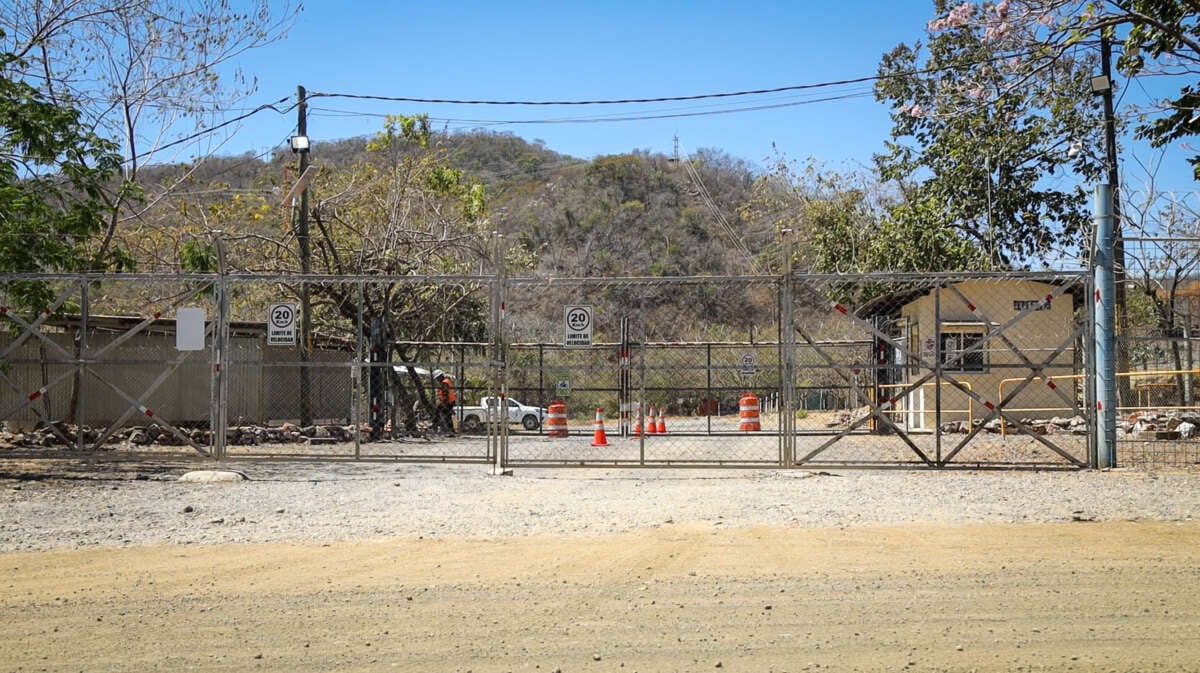 If the open pit Cerro Blanco mine goes through, it will engulf the entire area around the front gate to the mine.Michael Fox
If the open pit Cerro Blanco mine goes through, it will engulf the entire area around the front gate to the mine.Michael Fox
There isn’t much to see of the mine right now. There’s a long fence, covered in barbed wire running alongside the dirt road. Just inside is a little booth for security, and several other rectangular cream-colored buildings set back from the road. This mine was actually operational for several years, underground. But the company ran into trouble from thermal groundwater that it kept having to pump out.
Now, the mine has the go ahead to be an open pit. If it goes through, the entire area where I’m standing will be gone: the trees, the forest and the hillside.
“The open pit would be right here,” motions Barrera, astride his motorcycle. He wears a black baseball cap, jeans and a red polo shirt. “They would eliminate this road. And the community up there would have to go all the way around to get back to Asunción Mita.”
He looks around. A soft, warm breeze blows the trees beside us. Birds chirp just off the road.

A boy and a girl step out of the Lempa River in El Salvador. The Lempa is the country’s largest river. MICHAEL FOX
Asunción Mita is a town of roughly 40,000 people in the hills of southeastern Guatemala, near the border with El Salvador. It’s dusty and hot in the dry season — located in the Central American dry corridor, which is particularly vulnerable to climate disasters. And it has become the center of a battle over the future of mining in Guatemala.
In January, the outgoing Guatemalan government gave the green light for the Cerro Blanco open-pit gold mine in the hills outside of Asunción Mita. The mine is run by Canadian corporation Bluestone Resources, which expects to produce over 300,000 ounces of gold per year. Bluestone says it will bring jobs and opportunities to the local community.
But most locals don’t buy it.
Yony Barrera is one of them. He’s the host of the local radio show “Good Night Mita” and a member of the Permanent Environmental Committee of Asunción Mita, which was launched in March 2023 to fight against the mine.
Barrera doesn’t fit with your image of a typical environmentalist. He’s a middle-aged dad who runs a hardware store and rides a motorcycle. But he is passionate about protecting his community.
“Yeah, they say they’ll bring development and jobs,” says Barrera. “And we’re a poor country. We need work, but sustainable, responsible work. Not jobs that bring destruction. You have to look at the cost of that development.”
On a clear weekday morning in March, he gave me a ride up the dirt road to the mine. His motorcycle wound through the brown hills of eastern Guatemala, past parched vegetation and clouds of dust kicked up from oncoming traffic.
 If the open pit Cerro Blanco mine goes through, it will engulf the entire area around the front gate to the mine.Michael Fox
If the open pit Cerro Blanco mine goes through, it will engulf the entire area around the front gate to the mine.Michael FoxThere isn’t much to see of the mine right now. There’s a long fence, covered in barbed wire running alongside the dirt road. Just inside is a little booth for security, and several other rectangular cream-colored buildings set back from the road. This mine was actually operational for several years, underground. But the company ran into trouble from thermal groundwater that it kept having to pump out.
Now, the mine has the go ahead to be an open pit. If it goes through, the entire area where I’m standing will be gone: the trees, the forest and the hillside.
“The open pit would be right here,” motions Barrera, astride his motorcycle. He wears a black baseball cap, jeans and a red polo shirt. “They would eliminate this road. And the community up there would have to go all the way around to get back to Asunción Mita.”
He looks around. A soft, warm breeze blows the trees beside us. Birds chirp just off the road.
 Y
Yony Barrera stares at the front gate of Cerro Blanco mine in Eastern Guatemala. He says the mine would devastate the local ecosystem and community.Michael Fox
“The impact of this mine would be immense,” he says. “Not just for the environment, but also the lives of so many thousands of people. It’s sad. It’s sad that the ambitions of a few are worth more than the well-being of millions of people.”
Barrera’s point of view is commonly held in the region.
Nearly 88 percent of the population of Asunción Mita that participated in a town consultation process two years ago voted against the mining project. The referendum was held at the request of the local municipality and accompanied by dozens of organizations including the local Catholic church and environmental organization Madre Selva. After hearing the results, hundreds of residents celebrated in the town square.
But the mine and the then-government said it didn’t count. In a statement, Guatemala’s Ministry of Energy and Mines said the municipal government didn’t have the authority to hold the referendum.
“The impact of this mine would be immense,” he says. “Not just for the environment, but also the lives of so many thousands of people. It’s sad. It’s sad that the ambitions of a few are worth more than the well-being of millions of people.”
Barrera’s point of view is commonly held in the region.
Nearly 88 percent of the population of Asunción Mita that participated in a town consultation process two years ago voted against the mining project. The referendum was held at the request of the local municipality and accompanied by dozens of organizations including the local Catholic church and environmental organization Madre Selva. After hearing the results, hundreds of residents celebrated in the town square.
But the mine and the then-government said it didn’t count. In a statement, Guatemala’s Ministry of Energy and Mines said the municipal government didn’t have the authority to hold the referendum.
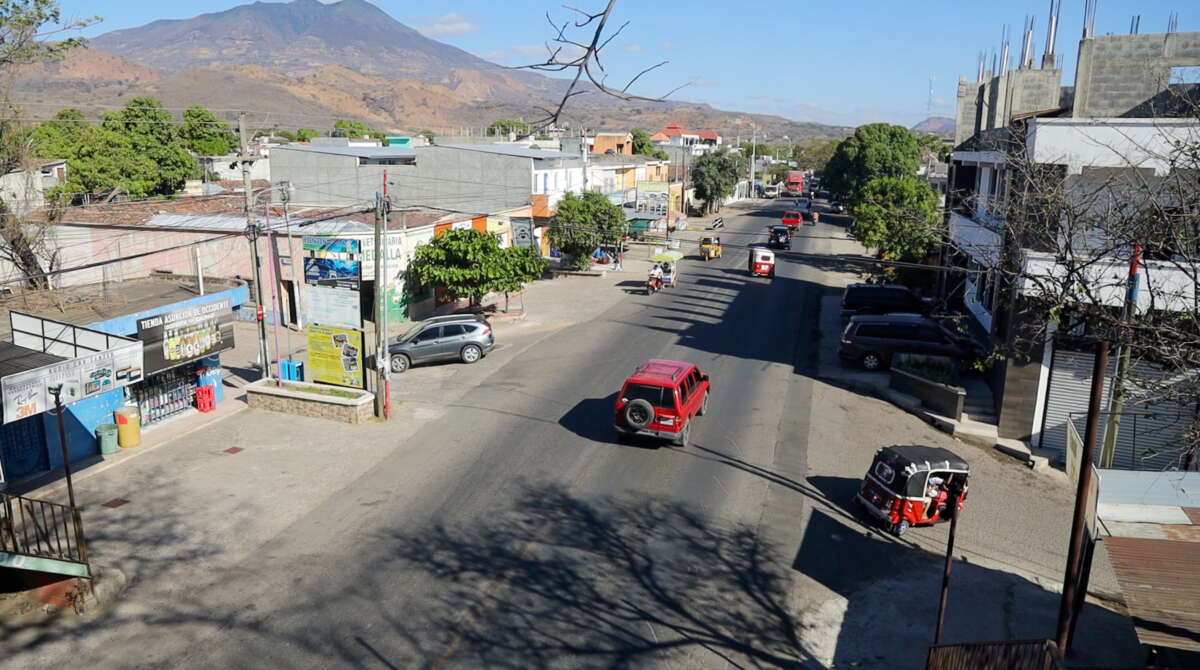
Cars travel on the Panamerican Highway, which runs through Asuncion Mita.Michael Fox
“The issue put before the residents of Asunción Mita is not within the jurisdiction of the municipality. It corresponds to the Central Government,” the statement reads. “In this sense, the Asunción Mita Municipal Council is legally prevented from making a decision related to the installation and operation of a mining project in its jurisdiction, therefore, consulting the neighbors over this issue is inadmissible.”
Bluestone also responded to the vote, stating, “Anti-mining groups formed a commission to organize a consultation of neighbors that, in the eyes of the public, unfairly portrayed future mining activities within municipal limits.”
“This consultation process was clearly illegal,” said Bluestone’s Guatemala director, Robert Gill.
The company has promised big things for Guatemala and the local community. According to a 2022 sustainability report, Bluestone said, when operational, the mine would provide more than 400 direct jobs and thousands in indirect employment. It stated that the project would generate payments to the Guatemalan government “of approximately USD $300 million.”
“We behave in a responsible and sustainable manner, working together and showing respect for our people and the community,” the company wrote.
Not everyone is entirely against the mine. Juan Pablo Muñoz wears a big cowboy hat and drives a pickup truck. He’s in town picking up supplies for his community, up the hill near the mine. He asked that his real name not be used for fear of reprisals from those either for or against the mine.
“The mine has brought both good and bad things for the community,” he says. “Because we had a lot of community members working there. But we know about the harm that it could cause tomorrow, for our children and for other populations. So, it might help some people, financially, now. But it will also bring destruction for the future.”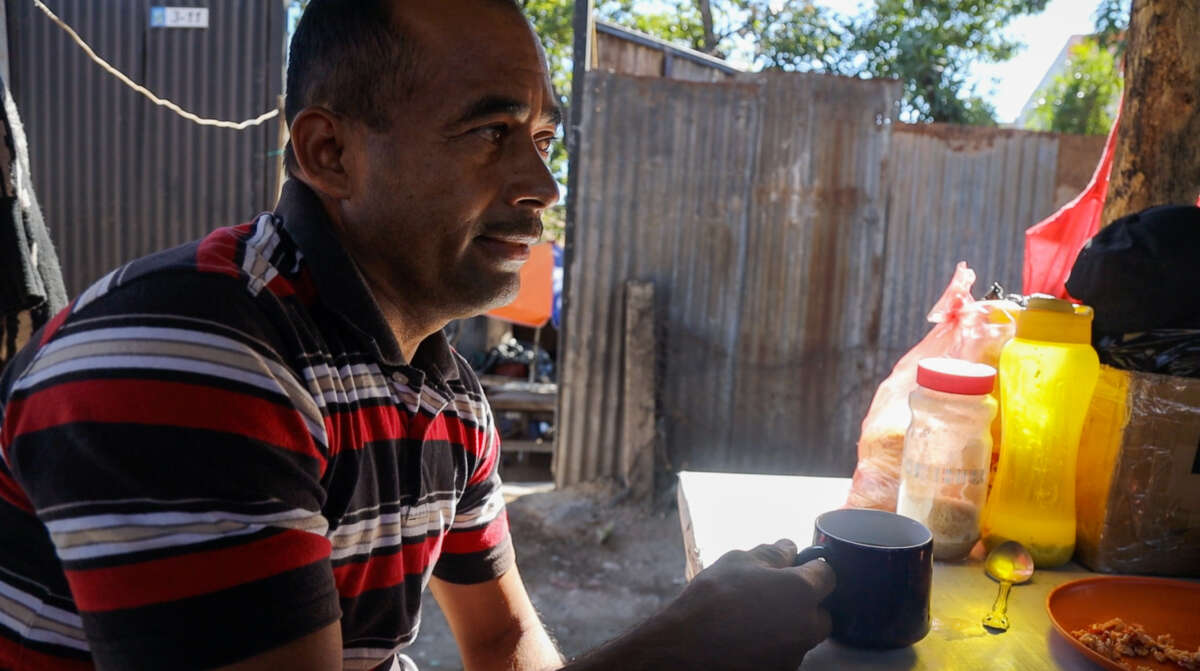
“The issue put before the residents of Asunción Mita is not within the jurisdiction of the municipality. It corresponds to the Central Government,” the statement reads. “In this sense, the Asunción Mita Municipal Council is legally prevented from making a decision related to the installation and operation of a mining project in its jurisdiction, therefore, consulting the neighbors over this issue is inadmissible.”
Bluestone also responded to the vote, stating, “Anti-mining groups formed a commission to organize a consultation of neighbors that, in the eyes of the public, unfairly portrayed future mining activities within municipal limits.”
“This consultation process was clearly illegal,” said Bluestone’s Guatemala director, Robert Gill.
The company has promised big things for Guatemala and the local community. According to a 2022 sustainability report, Bluestone said, when operational, the mine would provide more than 400 direct jobs and thousands in indirect employment. It stated that the project would generate payments to the Guatemalan government “of approximately USD $300 million.”
“We behave in a responsible and sustainable manner, working together and showing respect for our people and the community,” the company wrote.
Not everyone is entirely against the mine. Juan Pablo Muñoz wears a big cowboy hat and drives a pickup truck. He’s in town picking up supplies for his community, up the hill near the mine. He asked that his real name not be used for fear of reprisals from those either for or against the mine.
“The mine has brought both good and bad things for the community,” he says. “Because we had a lot of community members working there. But we know about the harm that it could cause tomorrow, for our children and for other populations. So, it might help some people, financially, now. But it will also bring destruction for the future.”

Resident Giovanni Ramirez is concerned for the impact the Cerro Blanco mine could have on the community and the environment.Michael Fox
“Some people will benefit,” says community member Giovanni Ramírez, who’s eating breakfast at a roadside taco stand in Asunción Mita. “But when we think about our children and the next generation, what forest are we leaving for them? There will be no more forest left.”
U.S. Lobby
Still, the Cerro Blanco mine has had powerful support. In March, the Guatemalan outlet Prensa Comunitaria reported that in 2023, the U.S. embassy lobbied the Guatemalan government of former President Alejandro Giammattei in support of the mine.
The embassy wrote two letters to then-Environment Minister Gersón Barrios Garrido, reminding him that Cerro Blanco mine was backed with “substantial capital from investors of origin from the United States of America.”
“For the U.S. Embassy in Guatemala it is very important to continue promoting the attraction of American capital investment in Guatemala, so we consider it important to continue working hand in hand with Guatemalan authorities to generate new job opportunities for Guatemalans, and to develop rural areas of the country,” reads the second letter, written on June 6, 2023. The letter specifically mentioned Cerro Blanco.
Since the 2000s, mining has been a big business in Guatemala. Much of it has been driven by Canadian and increasingly U.S. mining companies. But it has also created violent conflicts with local communities. Around the country, community residents and anti-mining activists have faced death threats, violence and killings from both private and state security. In 2018, Guatemala was one of the most dangerous countries per capita in the world for environmental activists.
“In Guatemala, it is not possible to operate a large-scale mine … without participating and benefitting from human rights violations and repression, corruption and impunity,” wrote editors Grahame Russell and Catherine Nolin in the conclusion to their 2021 book Testimonio: Canadian Mining in the Aftermath of Genocides in Guatemala.
Concerns about the Cerro Blanco mine go far beyond Guatemala.
Poisoning El Salvador
“Some people will benefit,” says community member Giovanni Ramírez, who’s eating breakfast at a roadside taco stand in Asunción Mita. “But when we think about our children and the next generation, what forest are we leaving for them? There will be no more forest left.”
U.S. Lobby
Still, the Cerro Blanco mine has had powerful support. In March, the Guatemalan outlet Prensa Comunitaria reported that in 2023, the U.S. embassy lobbied the Guatemalan government of former President Alejandro Giammattei in support of the mine.
The embassy wrote two letters to then-Environment Minister Gersón Barrios Garrido, reminding him that Cerro Blanco mine was backed with “substantial capital from investors of origin from the United States of America.”
“For the U.S. Embassy in Guatemala it is very important to continue promoting the attraction of American capital investment in Guatemala, so we consider it important to continue working hand in hand with Guatemalan authorities to generate new job opportunities for Guatemalans, and to develop rural areas of the country,” reads the second letter, written on June 6, 2023. The letter specifically mentioned Cerro Blanco.
Since the 2000s, mining has been a big business in Guatemala. Much of it has been driven by Canadian and increasingly U.S. mining companies. But it has also created violent conflicts with local communities. Around the country, community residents and anti-mining activists have faced death threats, violence and killings from both private and state security. In 2018, Guatemala was one of the most dangerous countries per capita in the world for environmental activists.
“In Guatemala, it is not possible to operate a large-scale mine … without participating and benefitting from human rights violations and repression, corruption and impunity,” wrote editors Grahame Russell and Catherine Nolin in the conclusion to their 2021 book Testimonio: Canadian Mining in the Aftermath of Genocides in Guatemala.
Concerns about the Cerro Blanco mine go far beyond Guatemala.
Poisoning El Salvador
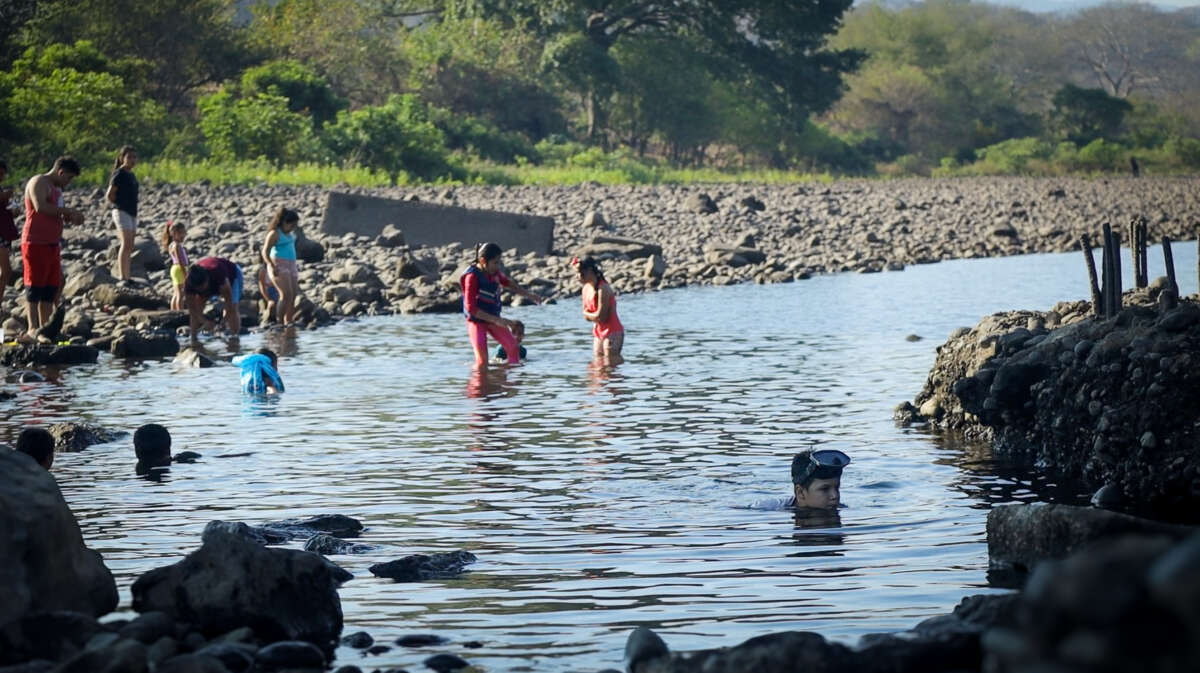
Children play in the Lempa River, under the Cuscatlan Bridge in El Salvador.Michael Fox
On a warm Sunday morning in El Salvador’s department of San Vicente, children swim in the Lempa River, under the watchful eye of their mothers, who sit on the rocks and boulders that cover the riverbank. The kids’ excited voices and splashing of the water echo off the Cuscatlan Bridge, which hangs far above them. Downstream, a group of men are fishing. Over it all bathes the warm sound of a choir of voices. Parishioners from a local evangelical church stand around a pickup truck, where a preacher is leading them in song. They are there to baptize the newest member of their church, a little girl embraced gently by her father
On a warm Sunday morning in El Salvador’s department of San Vicente, children swim in the Lempa River, under the watchful eye of their mothers, who sit on the rocks and boulders that cover the riverbank. The kids’ excited voices and splashing of the water echo off the Cuscatlan Bridge, which hangs far above them. Downstream, a group of men are fishing. Over it all bathes the warm sound of a choir of voices. Parishioners from a local evangelical church stand around a pickup truck, where a preacher is leading them in song. They are there to baptize the newest member of their church, a little girl embraced gently by her father
.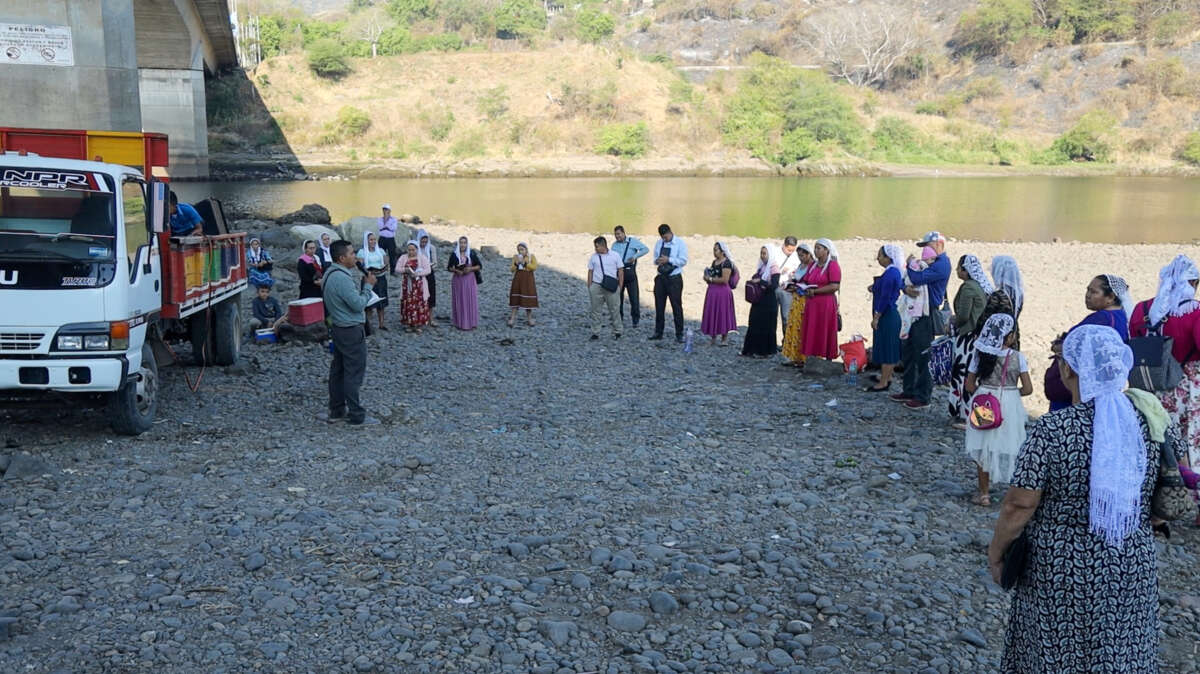

Members of a local church hold a service for a baptism of a little girl on the banks of the Lempa River in El Salvador.Michael Fox
The Lempa, El Salvador’s largest river, provides water to half the country. But environmental activists say the Cerro Blanco mine will threaten it all.
That’s because Guatemala and El Salvador share the Guija Lake, just downstream from the Cerro Blanco mine. The waters from that lake then run into the Lempa River. They say the environmental impact of runoff from the mine could be disastrous.
In late January, anti-mining and environmental activists from both El Salvador and Guatemala held a press conference in San Salvador to denounce the approval of the Cerro Blanco mine and to demand action to block it.
“The company says that in order to leach gold from the ore, it’s going to need to use eight tons of cyanide a day, and that will be deposited in the environment. Can you imagine eight tons of cyanide for 10 years?” the coordinator of the Central American Alliance Against Mining, Pedro Cabezas, told the cameras. Behind him was a large green and white banner for El Salvador’s National Front Against Mining. “This will end up in the water basins of El Salvador. It will be a true tragedy, for decades.”
The Lempa, El Salvador’s largest river, provides water to half the country. But environmental activists say the Cerro Blanco mine will threaten it all.
That’s because Guatemala and El Salvador share the Guija Lake, just downstream from the Cerro Blanco mine. The waters from that lake then run into the Lempa River. They say the environmental impact of runoff from the mine could be disastrous.
In late January, anti-mining and environmental activists from both El Salvador and Guatemala held a press conference in San Salvador to denounce the approval of the Cerro Blanco mine and to demand action to block it.
“The company says that in order to leach gold from the ore, it’s going to need to use eight tons of cyanide a day, and that will be deposited in the environment. Can you imagine eight tons of cyanide for 10 years?” the coordinator of the Central American Alliance Against Mining, Pedro Cabezas, told the cameras. Behind him was a large green and white banner for El Salvador’s National Front Against Mining. “This will end up in the water basins of El Salvador. It will be a true tragedy, for decades.”
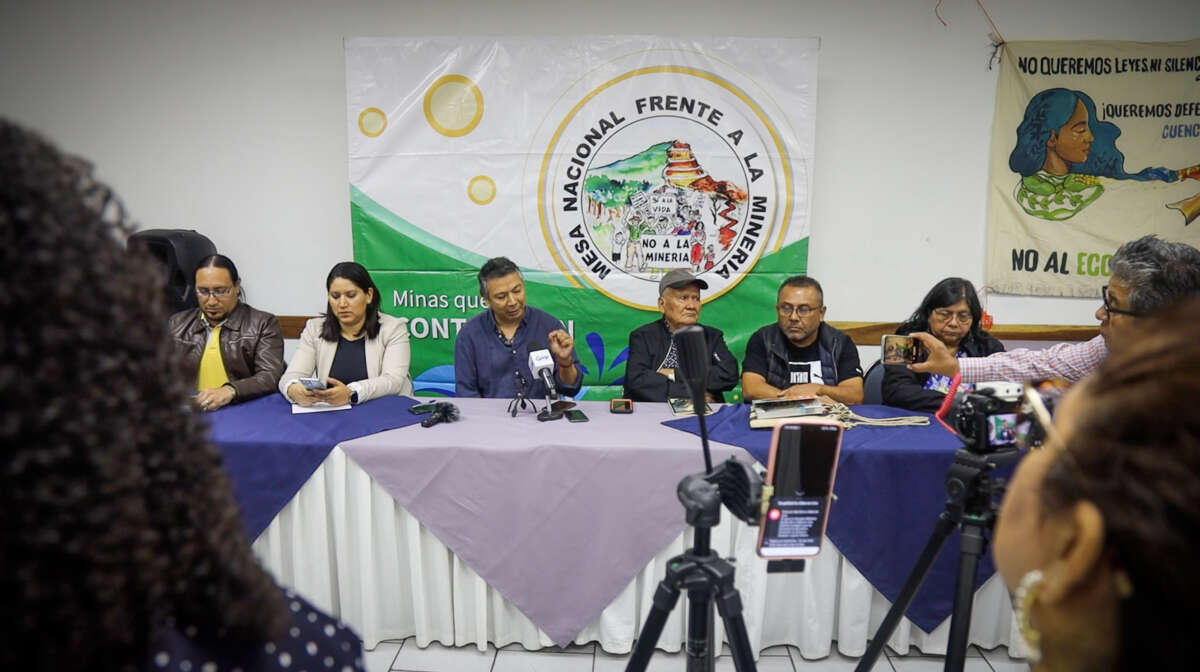
Anti-mining activist Pedro Cabezas speaks into the mic at a press conference denouncing the Cerro Blanco Mine in San Salvador.Michael Fox
In particular, the anti-mining activists expressed concerns for the size of the tailings and waste pile included in the plans for the Cerro Blanco mine. The waste pile would be one of the largest in the country, and at risk of runoff and collapse during the rainy season, which often sees heavy downpours.
“The mine will mean death,” Nelly Rivera from the Association of Women Environmentalists told Truthout after the meeting. “The Lempa River provides water for 3 million Salvadorians. This water has been a source of work, of sustenance, of life. And if they don’t have this, what do they have left? They will have to leave.”
The potential impact is compounded by the fact that mining is currently prohibited in El Salvador. The national Congress banned metal mining in landmark legislation in 2017. And yet, El Salvador’s water could still be impacted by the Guatemalan mine.
But it is not a done deal yet.
In particular, the anti-mining activists expressed concerns for the size of the tailings and waste pile included in the plans for the Cerro Blanco mine. The waste pile would be one of the largest in the country, and at risk of runoff and collapse during the rainy season, which often sees heavy downpours.
“The mine will mean death,” Nelly Rivera from the Association of Women Environmentalists told Truthout after the meeting. “The Lempa River provides water for 3 million Salvadorians. This water has been a source of work, of sustenance, of life. And if they don’t have this, what do they have left? They will have to leave.”
The potential impact is compounded by the fact that mining is currently prohibited in El Salvador. The national Congress banned metal mining in landmark legislation in 2017. And yet, El Salvador’s water could still be impacted by the Guatemalan mine.
But it is not a done deal yet.
Guatemala City
Guatemala’s new president, Bernardo Arévalo, was sworn in on January 15, after a protracted fight with Attorney General Consuelo Porras, who repeatedly tried to first block his candidacy and then his electoral victory.
Arévalo is the son of the country’s first democratically elected president, Juan José Arévalo, who ran the country from 1945 to 1951. He is credited with ushering in what is known as the Guatemalan Spring, with unprecedented reforms that granted the country’s citizens greater democratic rights than ever before. This experience, however, was abruptly ended by a U.S.-backed coup in 1954, that was, in part, pushed by the U.S. banana corporation United Fruit.
Now, President Bernardo Arévalo has promised to renew his father’s dream. He’s also committed to reviewing all mining licenses approved under the previous administration.
One morning in March, Yony Barrera and a small delegation from Asunción Mita — including three other members of the Asunción Mita Environmental Committee, and Julio González, from the Madre Selva Ecologist Collective — drove to Guatemala City to meet with members of Arévalo’s new government.
The meeting was held at the offices of congressional representative José Alberto Chic Cardona, of the small center-left party VOS (Will, Opportunity and Solidarity), on the second floor of legislative offices in downtown Guatemala City, around the corner from Congress. Chic was impassioned and direct, in a dark suit, with short hair, a mustache and goatee. He’s expressed grave concerns over the mine. In attendance were José Rodrigo Rodas, the vice minister of the Environment Ministry and Zuleth Muñoz, from the country’s Human Rights Ombudsman office.
They sat in a rectangular room across a long wooden table and discussed the mining project for several hours.
The most important moment of the meeting was the very clear message from Álvaro Morales, the mining director of the country’s Ministry of Energy and Mines.
“The ministry has not authorized a mining plan for Cerro Blanco and it’s not going to authorize one right now,” he said. “There are many steps to go before then.”
For the anti-mining activists at the table, it was a bittersweet response. The mine is not going to happen now. But it’s not off the table. Their struggle continues.
In the hallway outside the congressional office, after the meeting, Yony Barrera huddled with his companions and discussed the future. He wore a white T-shirt, a dark blue jacket and the same black cap he wore the day he drove me up to the mine.
I asked him what he thought about the meeting.
“Well, we’re halfway there. We were able to achieve some things, but we didn’t achieve everything we wanted, which was the revoking of the environmental license,” he said. “We removed the tree, but we wanted to cut it off at the roots, so it would never come back. But we will continue to fight.”
Guatemala’s new president, Bernardo Arévalo, was sworn in on January 15, after a protracted fight with Attorney General Consuelo Porras, who repeatedly tried to first block his candidacy and then his electoral victory.
Arévalo is the son of the country’s first democratically elected president, Juan José Arévalo, who ran the country from 1945 to 1951. He is credited with ushering in what is known as the Guatemalan Spring, with unprecedented reforms that granted the country’s citizens greater democratic rights than ever before. This experience, however, was abruptly ended by a U.S.-backed coup in 1954, that was, in part, pushed by the U.S. banana corporation United Fruit.
Now, President Bernardo Arévalo has promised to renew his father’s dream. He’s also committed to reviewing all mining licenses approved under the previous administration.
One morning in March, Yony Barrera and a small delegation from Asunción Mita — including three other members of the Asunción Mita Environmental Committee, and Julio González, from the Madre Selva Ecologist Collective — drove to Guatemala City to meet with members of Arévalo’s new government.
The meeting was held at the offices of congressional representative José Alberto Chic Cardona, of the small center-left party VOS (Will, Opportunity and Solidarity), on the second floor of legislative offices in downtown Guatemala City, around the corner from Congress. Chic was impassioned and direct, in a dark suit, with short hair, a mustache and goatee. He’s expressed grave concerns over the mine. In attendance were José Rodrigo Rodas, the vice minister of the Environment Ministry and Zuleth Muñoz, from the country’s Human Rights Ombudsman office.
They sat in a rectangular room across a long wooden table and discussed the mining project for several hours.
The most important moment of the meeting was the very clear message from Álvaro Morales, the mining director of the country’s Ministry of Energy and Mines.
“The ministry has not authorized a mining plan for Cerro Blanco and it’s not going to authorize one right now,” he said. “There are many steps to go before then.”
For the anti-mining activists at the table, it was a bittersweet response. The mine is not going to happen now. But it’s not off the table. Their struggle continues.
In the hallway outside the congressional office, after the meeting, Yony Barrera huddled with his companions and discussed the future. He wore a white T-shirt, a dark blue jacket and the same black cap he wore the day he drove me up to the mine.
I asked him what he thought about the meeting.
“Well, we’re halfway there. We were able to achieve some things, but we didn’t achieve everything we wanted, which was the revoking of the environmental license,” he said. “We removed the tree, but we wanted to cut it off at the roots, so it would never come back. But we will continue to fight.”
No comments:
Post a Comment